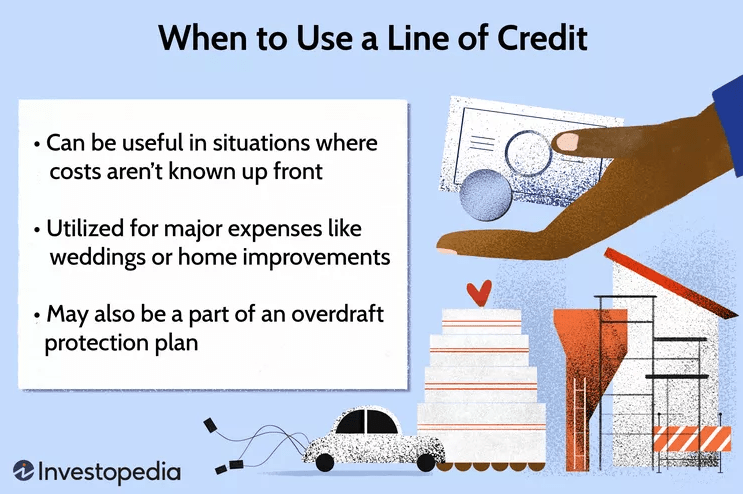Taking out a business line of credit may seem like a giant leap, but it is an incredibly smart financial move for your small business. It is like having a money safety net that is there for you whenever you need it.
It is very much like a credit card in operation: you have access to a predetermined amount of cash, and you only pay interest on the amount you actually borrow. Your lender will have a maximum limit, so you will always know the amount you can access.
So, if you are prepared to dive into this kind of funding, the following are some important tips to enable you to navigate through the application process and get the best deal possible.
1. Improve Your Credit Score (Both Business & Personal!)
This is most likely the most important initial step, and it can take a little time, so it is worth getting on with it early on ahead of when you actually apply.
They check both your business and personal credit scores because they provide a clear indication of your level of responsibility. A good score not only improves your approval chances but also qualifies you for larger credit lines and better interest rates.
So, how do you actually improve those credit scores?
- Check Your Credit Report: This is a major one! Order copies of your business and personal credit reports from all three major credit bureaus. Scrutinize them carefully. You would be amazed how frequently mistakes appear, and even a tiny error can hurt your score. If you do discover any errors, dispute them at once. This little activity can boost your score immediately.
- Pay Bills Timely and in Full: This may be obvious, but it is the foundation of good credit. Timely payments are a big no-no for lenders. Organize reminders, automate where you can, and ensure that each bill, from rent to supplier invoices, is paid on time. And if you can pay your balances in full at the end of each month, even better! This indicates you are not too dependent on credit and control your cash flow well.
- Avoid Opening Additional Credit Accounts: While you are working on improving your score, try to resist the urge to open new credit lines. Each new application can result in a “hard inquiry” on your credit report, which can temporarily ding your score. Focus on strengthening your existing credit profile first.
2. Get Your Paperwork in Order
Lenders want to have a good understanding of the financial well-being of your business in order to determine whether or not you qualify and what the risk is.
That requires collecting a decent amount of paperwork. It is going to save you a lot of time and stress later on to get all of this in order before you even begin the application process. It also indicates to the lender that you are organized and serious about your application.
Here is a general list of what you will probably need:
- Balance Sheet: This gives a snapshot of your business’s assets, liabilities, and owner’s equity at a given point in time. It reflects what your business has, what it owes, and the owner’s interest.
- Bank Statements: Lenders will typically request 3-6 months of bank statements. These give them insight into your cash flow, how regularly money is flowing in and out, and your average daily balance. They are an honest view of your financial activity.
- Profit and Loss (P&L) Statement: Also known as an income statement, this document summarizes your revenues, costs, and expenses over a specific period (e.g., a quarter or a year). It shows whether your business is making a profit or a loss.
- Business and Personal Tax Returns: Lenders will want to see your tax returns for the past couple of years for both your business and yourself personally. These documents are verified summaries of your income and expenses, and they provide an objective look at your financial history.
- Business Plan: Although not necessarily always requested for a line of credit, having a well-written and to-the-point business plan that defines your objectives, strategies, and what you intend to do with the line of credit is extremely useful. It shows prudence and a distinct direction for your business.
- Legal Documents: These may be your business registration, articles of incorporation, and any necessary licenses or permits. These define your business’s legal status.
3. Identify Your Best Source of Capital
With all of the lenders available, it can be daunting to know where to begin looking for a business line of credit. Banks, credit unions, online lenders – the possibilities are endless! This is where taking advantage of a specialized platform can be a tremendous assist.
Firms such as Biz2Credit, for instance, serve as intermediaries. Rather than having to go through hundreds of lenders and their individualized requirements, they can introduce you to sources of financing that are most appropriate for the unique profile and needs of your company. They have access to a broad network of lenders and know what each is seeking.
4. Look at Collateral
While some business lines of credit are not secured (i.e., they do not involve collateral), most lenders prefer or require a secured line of credit. This entails using some type of asset to secure the loan.
Why? Because collateral lowers the risk for the lender. If your business is unable to repay the line of credit, the lender can seize and sell the collateral to cover their losses.
What types of assets can be used as collateral?
- Inventory: If your company has a considerable inventory that can be sold, this will frequently qualify as collateral.
- Real Estate: If your company has property such as its building, offices, or other commercial real estate, it makes great collateral.
- Equipment: Expensive equipment, trucks, or other business machinery can also be used to secure a line of credit.
- Accounts Receivable: At times, your accounts receivable (customers’ balance due to you) can act as collateral. This is commonly known as “accounts receivable financing” or “invoice factoring” and is a type of line of credit.
Consider what assets of value your business holds and how they can be utilized to enhance your application.
5. Consider Revenue & Time in Business
Aside from your credit history and collateral, lenders will also give great importance to your business’s income and how long your business has been in operation. These items reveal important information on your business’s stability, financial health, and history.
Revenue Requirement: Any lender will demand a minimum yearly revenue requirement. This is not so much about how much you earn, but on a consistent basis. It indicates that your company is making enough money to cover potential repayments.
Always inquire about what the minimum revenue requirement is before applying to prevent wasting time on applications you do not qualify for on the most basic level. Steady, strong revenue makes you a much better borrower.
Time in Business: Lenders prefer to have evidence of a business having been around for some length of time, at least one year, ideally two or more. Such history is an indicator of stability and survivability.
A young business, perhaps high-growth and innovative, by its nature, is riskier in the mind of a lender since it has not yet established itself as long-term sustainable.
If you have a very new business, you will have more difficulty being approved for a conventional line of credit and will have to look into other forms of financing beforehand or establish an operating history.
Conclusion
A business line of credit is indeed a wise financial instrument for any business. It offers precious flexibility and immediate access to capital whenever you may require it, be it to ride out a slow period, capture a growth chance, or just enjoy peace of mind.
If you direct your attention to enhancing your credit, streamlining your finances, investigating appropriate lenders, thinking about collateral, and learning the revenue and time-in-business qualifications, you will be well down the path to finding the best possible arrangement for your business.

